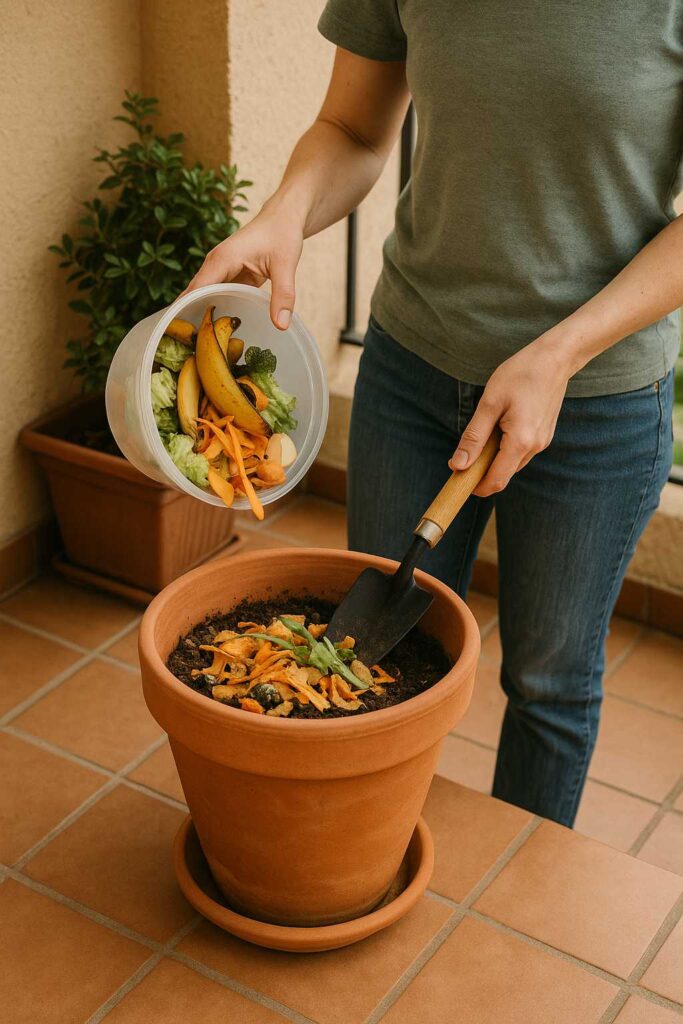 No yard? No problem. Learn how to compost in small batches—without bins, gimmicks, or a huge pile.
No yard? No problem. Learn how to compost in small batches—without bins, gimmicks, or a huge pile.
If you’ve ever thought composting required a giant backyard, a spinning bin, or a complex system of layers and thermometers—you’re not alone. But here’s the good news: composting can be simple, small-scale, and surprisingly effective… even on a porch.
What Is a Miniature Compost Pile?
A miniature compost pile is exactly what it sounds like—a small pile (or container) of composting organic matter that doesn’t require a traditional setup. Think of it as batch composting on a micro scale. It’s perfect for gardeners who want to enrich their soil, reduce food waste, and build healthy gardens without the commitment (or square footage) of a large compost system.
Can You Really Compost on a Porch?
Yes—and people all over the world do. In urban areas from Tokyo to Toronto, gardeners are turning to compact composting methods that fit on balconies, fire escapes, or even kitchen countertops. Here are a few real-world approaches:
Japan’s Bokashi method uses sealed buckets to ferment food scraps with microbes.
India’s matka composting uses clay pots stacked and rotated for airflow and drainage.
Vermicomposting (worm bins) is popular worldwide and fits neatly in a shady porch corner.
Trench composting (in-ground) can even be adapted to containers or large planters.
But you don’t need a system or a fancy container to get started.
How to Start a Mini Compost Pile (Without Buying Anything)
Here’s how you can make a mini compost pile right on your porch with a few simple items:
What You’ll Need:
A wide clay pot, plastic tub, or sturdy cardboard box
Kitchen scraps (vegetable peels, coffee grounds, fruit waste)
Dry material (shredded paper, dead leaves, or coconut coir)
A small shovel or trowel
Optional: a breathable cover like burlap or an old towel
Step-by-Step:
-
Layer it: Add a handful of dry “browns” at the bottom (paper or leaves), then a small amount of “greens” (food scraps), then another thin layer of browns.
-
Mix regularly: Every few days, stir it gently with your trowel to keep it aerated.
-
Keep it covered: This prevents pests and helps keep moisture in.
-
Check moisture: It should feel like a wrung-out sponge. If it’s too wet, add dry browns. Too dry? Sprinkle a little water.
-
Let it sit: In warm weather, you’ll see results in 4–6 weeks. The pile will shrink and darken as it turns into rich compost.
Tips to Keep It Porch-Friendly:
Avoid meat, dairy, and oily foods—these can smell and attract critters.
Use a tray underneath to catch drips.
Add a sprinkle of garden soil or finished compost to boost microbes.
Keep it in partial shade to prevent drying out too fast.
What to Do with the Finished Compost
Once it’s dark, crumbly, and smells earthy, your miniature compost is ready! Use it:
In your porch planters and pots
To top-dress herbs or veggies
As a boost for tired soil
Why It’s Worth Trying
Making a mini compost pile reminds us that gardening doesn’t have to be grand to be good. It’s proof that you can build a healthier garden (and planet) one banana peel at a time.
